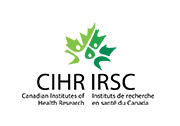- Stigma, or stigmatizing, means negatively stereotyping people based on biased and often inaccurate assumptions.
- Discrimination happens when stigma is enacted through mistreatment of others.
- Substance use stigma and discrimination occur in a broad context of social, political, and economic factors and are embedded in health care policies, practices, and environments.
- Although most Canadians use substances in some form:
- Some substances and some methods of use are stigmatized more than others
- Not everyone using the same substance is treated the same. For example, people are treated differently based on income, racialization, cultural background, gender and parenting roles, and other factors
- Some people continue to be negatively judged and stigmatized even when they do not use substances
- Stigma and discrimination related to substance use are common and frequently intersect with other forms of stigma and discrimination, such as racism and sexism, and worsen inequities.
- The criminalization of some substances (and not others) both reflects stigma and perpetuates stigma, significantly affecting health outcomes and health care experiences.
- Substance use discrimination is a pervasive barrier to healthcare with harms endured unequally.
- Substance use stigma/discrimination is an equity issue; everyone can take steps towards combating it and providing safe pathways to care for people who experience it. At one of the organizations we have consulted with on these key messages, they repeatedly remind us, “It’s your job to provide good care” regardless of whether people use substances or not.




